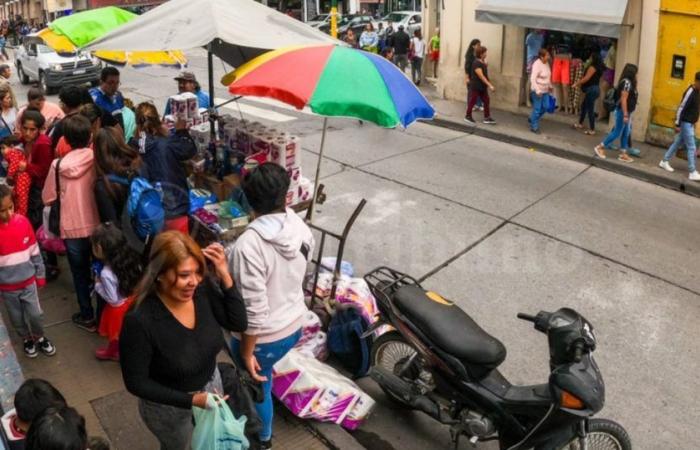The labor indicators provided by Indec last Monday on the Salta agglomerate (which includes Capital and neighboring municipalities) corresponding to the first quarter of this year have two basic readings. If they are related to the same months of 2023, which is what corresponds methodologically to comparing equal periods, the employment figures are similar and there was even a decrease in unemployment. On the other hand, if the data is contrasted with the last quarter of last year, when there was another seasonal context, the labor numbers worsened. After this clarification, the report from the national statistics agency highlights an item in which the province worsened either compared to the first quarter or the fourth of 2023: in the quality of work.
In terms of employment, in the first quarter of this year, 43.2% of active Salteños had a job. There are about 287 thousand people. There were the same number of workers in the first three months of 2023. And in the fourth quarter of 2023, the employment rate reached 46.1%, which totaled 305 thousand workers. It should be clarified that here the Indec includes informal and formal work (even that which can be precarious like that of many monotributistas).
Regarding unemployment, an index of 5.6% (17 thousand people) was recorded in the Salta agglomerate in the last measurement. In the first quarter of 2023, the same indicator was 6.6% (20 thousand) and in the fourth quarter, 4.9% (16 thousand).
Regarding the quality of work, this aspect is observed in the category of “employed job seekers”, which is surveyed by Indec. They are the ones who want to change jobs. In the first quarter, this item for Salta was 19.1%, about 58 thousand people. A year ago, the same indicator was 17.8% and in the fourth quarter of 2023, the rate was 18.3%. From this perspective, the estimate or quality of employment in the main urban center of the province decreased.
Paradox
Meanwhile, the numbers of formal jobs registered in the private sector do not stop growing in the province. According to a recent report from the National Ministry of Labor, private employment reached 130,800 positions in Salta in March. There are 4,600 more workers (3.6% growth) than in the same month of 2023. Together with Neuquén, Río Negro, Catamarca and Capital Federal, they are the only districts that grew in private employment in the third month of the year.
Despite these positive numbers and even with record marks in terms of the number of private employees, Salta registers one of the highest poverty rates in the country. Because?
“The most general answer, and therefore not too deep, is that employment is not being a sufficient condition to keep people out of the poverty zone; or that it is no longer such, as it could have been in another time,” explained economist Jorge Paz in his latest report on poverty, economic inequality and poor workers in the NOA and Salta. The study was presented by the Institute of Labor Studies and Economic Development (Ielde), dependent on Unsa.
He mentioned that there are three mechanisms that operate in poverty with work: “low income from jobs, less household income from other non-work sources (retirements and transfers, among others), and high costs of living related to work.” consumption and care of dependent household members”.
According to the Ielde report, until 2023, 31% of people with work were below the poverty line in the country. The figure was higher in Salta, it reached 38% of workers and in the NOA it reached 37%.
One of the factors that influences whether a worker is poor is the level of informal employment. In Salta, last year, almost 53% of employees were employed in the black market. This is well above the national average of 38%. In the NOA, the average informal employment rate was 48.4%.
In this relationship, of the total informal workers in the province, it was estimated that 52% are below the poverty line, while within formal employment, almost 15% are poor.
The gap in informality, and therefore the supposed paradox of poverty and work, is widening towards the interior of the province. In the capital of Salta and its surroundings, the rate of employed people (workers) in poverty is 29% and in the rest of the province it reaches 48%.
Critical situation
The Ielde study indicates that poverty in Salta for the first quarter of 2024 reached 65% of the population and extreme poverty (that is, below the limits of subsistence), 21%. At the national level, during the same period, poverty reached 58% of the inhabitants and in the NOA, just over 65%.
It must be taken into account that the poverty rate in Argentina at the end of 2023, measured by Indec, was 38.7%; in the NOA, 38.6%, and in Salta, 36.6%.






